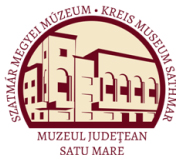Marta, Liviu: The Late Bronze Age Settlements of Petea-Csengersima (Satu Mare, 2009)
VI. Annexes
S25 Complex 1 - A pit laid in the confines of the sector and thus it was partially excavated in a semiarched area (94 x 192 cm). It occurred in the sterile soil, in 57 cm depth. The walls were steep and 47 cm high, and they grew narrow towards the base of the pit in 104 cm depth. The fill was greyblackish, identical to the fill of the cultural layer. Inventory: 27 ceramic shards that originated from 4 vessels were assigned to the Suciu de Sus culture. Other 5 ceramic shards with black, shiny sides (originated from at least 2 vessels) were assigned to the horizon Lăpuş II - Gáva I. Pottery shape PasteDecoration type Pottery type No. of elements Plate cup f FA 1 28/8 f]F,CC,GI 1 28/9 cup f AA,GA 4 1 28/10 f GM 1 28/11 cup f AA,GA 4 1 28/12 cup f HB 1 dish s 2Ab 1 S25 Complex 2 (Fig. 7) — A beehive shaped pit with circular outline (80 cm in diameter) was identified in the sterile soil, in 61 cm depth. The walls of the pit were 20-30 cm high, steep or slightly inclined towards the inside and then they widened towards the outside. The base was flat and had 102 and 117 cm in diameter. Inventory: 51 ceramic shards, one fragment of a grinding stone, bone splinters. The ceramic shards originated from at least 12 vessels. 3 fragments that originated from 2 vessels had excised and incised decorations. Two ceramic shards had excised decorations (pot and cup). Date/culture: Suciu de Sus. Pottery shape PasteDecoration type Pottery type No. of elements Plate pot s 3 1 28/13 cup s 2B 1 29/1 amphora s GH,HH,MM 3 1 29/2 dish s 2Aa 1 29/3 amphora s 1 cup f 1 dish s 2Aa 1 pot f 2A 1 Sector S26 (35 x 7 m, 245 m2, Fig. 8) S26 Complex 1 (Fig. 8, 9) — A large sized pit had amorphous shape (maximum length of 7, 10 cm, maximum width of 4, 93 cm) and was situated 4 m far from Complex 2. Its outline was identified in the sterile soil in 43 cm depth. The walls were irregular, varying from inclined towards the inside to arched, or to steep, here and there. The base was irregular, it varied from 19 to 26 cm in depth in the central area, and towards the limits it reached 45-52 cm in depth. The fill had different coloured inclusions, with shades from mustard-yellow to dark grey, and contained scattered fragments of daub and traces of charcoal and ash here and there. Inventory: 431 ceramic shards (9 were re-fired), 12 fragments of grinding stone (one was slighdy fired), 6 river stones (crushers or stones used for polishing or sharpening), one cart wheel and one clay weigh, a piece of a clay from a hearth, a fragmentary fired bone. None of the vessels was complete. The ceramic shards originated from 32 vessels. 22 ceramic shards had excised and incised decorations that originated from at least 5 vessels. Even though the pit revealed a faceted rim and one fragment of an amphora with a black-shiny outside and brick red coloured inside, the great number of fragments with excised and incised decorations that originated from 5 vessels were assigned to the Suciu de Sus archaeological culture. Pottery shape Paste Decoration type Pottery type No. of elements Plate pot c FL 2B 1 29/10 weight s 2 1 29/4 p. cooking v.c 1 29/5 127
